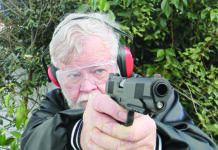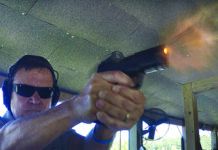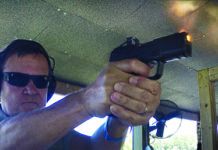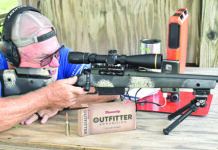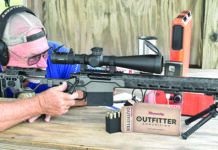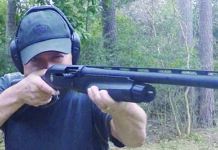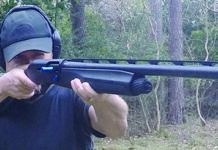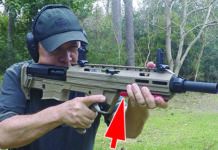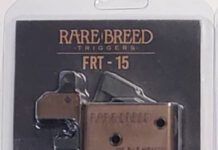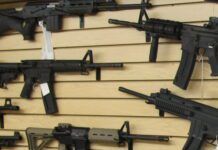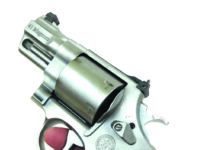Sig Sauer 250 On The Way?
Thanks for a great magazine. I make my purchases based on your testing—so far they’re spot-on. Are you going to test the Sig Sauer 250? I’d be interested in your evaluation and comments.
Mark Plummer
Yes, we have a Sig Sauer 250 in inventory, and it is scheduled for the April 2008 issue, which should be in your hands in about a month. And, no, I can’t release the review early. —Todd Woodard
Re “.45 ACP Matchup: We’re Mostly Sold
On Kimber’s Custom SIS RL,” February 2008
While I really enjoy your magazine, I believe you missed a bet when you failed to include the S&W 1911 pistol in your testing. Late last year, I purchased my SW1911 complete with the under-rail, which allowed me to attach a night light (or perhaps later a laser sight). At the local outdoor range and at a distance of 25 yards, I am consistently able to put eight rounds of MagTech 230-grain roundnose bullets within a 10-inch circle. Admittedly, these results are not achieved in the same “timed” rapid-action manner as your testing, but I am extremely pleased with the results. I used a self-defense stance with arms out straight and elbows “locked” and level with my master eye (which happens to be my left even though I’m right-handed).
Chuck Kirk
Canyon Lake, TX
We tested the SW1911 Sc in the May 2005 issue. It got a Conditional Buy (the equivalent of a C-grade today). We said, “The light Smith Sc had nice checkered wood grips, but we could not always depress the beavertail with a hasty grip. Many shooters won’t have trouble, and will come to love this otherwise great carry gun. We thought it could use a lighter trigger. We weren’t happy with the magazine extensions, but that’s trivial. This was a giant step for S&W, we thought, and one most welcome.” But’s probably time for us to look at the gun again. —Todd Woodard
Re “.380 Autoloaders: FireStorm Beats
Walther PPK, Hi-Point CF,” February 2008
I enjoy your magazine greatly. I have been a subscriber for several years. I recently considered not renewing my subscription because you are sometimes a little quick to downgrade a gun that is essentially in “beta-testing” configuration for not being perfect as received. However, the information you offer is still very high quality, especially compared to magazines run by advertising. Reading the articles makes sense of the information, whereas simply looking at your grading can be misleading. Case in point: the Walter PPK evaluation in the February 2008 issue.
You give the gun a B+ even though you had to send it back to the manufacturer for repairs to make it shoot. This seems very biased grading to me. Other manufacturers rate a D- or F if the gun does not function out of the box, with comments that the repairs made the gun perfectly viable after a trip back to the factory. It seems all the gun magazines, including yours, tend to excuse this.
I worked in a large firearms retail outlet for a time and do a little gunsmithing. I once sold a Mountain Light from the Performance Center that would not shoot out of the box. The cylinder was set so far forward that only two holes were headspaced close enough to fire. A trip to the factory quickly made this right, but I think S&W quality control has slipped, and their reputation for quality is no longer fully deserved. S&W had a spate of this problem about 20 years ago and fixed it, but I think the problem is back and too many are ignoring it because of a bias for the S&W name
I do find it amazingly fair that you rate such guns as Hi-Point and Bersa high without apparent bias, but I suspect you have the bias toward S&W that is common throughout the industry. In my opinion, Ruger and Taurus build better guns, for initial quality, for less money than S&W.
Zeke Corder, Zeke’s Gun Repair
Kuna, IdahoThanks, Zeke, for your thoughtful comments. When we first tested the S&W-made PPK in April 2006, we didn’t cut it any slack, and gave it a Don’t Buy rating. We tested the very same but factory-modified PPK again in January 2008 because it was so similar to the FireStorm.
Current S&W handguns are indeed priced way up there, but in my experience the failure rate of other makes is higher. Too many of today’s firearms are preassembled kits that need significant work before they’re street ready. There are exceptions—Ruger, Savage and Kimber come to mind—that are generally problem-free right out of the box, largely because they listen to folks like you and me. Of three recently tested “made in the U.S.” handguns, one shot poorly, another could not be disassembled, but the third, a Ruger, was perfect.
Until we have a social revolution that brings manufacturing skills and pride back into the U.S., today’s gun buyer will either have to become handy, or take his new gun to someone who is.
—Ray Ordorica
Re “Firing Line,”
February 2008
I was certainly dismayed when I read in your publication that Peter Capstick was not a professional hunter but merely a bartender. I admit that I have enjoyed his yarns for a couple of decades, always looking forward to the next article or book. However, if what you say is true, then I may be forced to banish my Capstick books to the trash heap and scour my brain of all his disinformation.
Could you please supply your reading public with the evidence that Capstick was a fraud? If this was indeed so, your shooting public should know for certain so that all can take similar actions? We certainly did not wish to be led astray by those who are less than they actually are.
Joel C. Guenther
Please do not throw your Capstick books out. While I can only offer second-hand evidence of his past, via my bona-fide professional hunter friends and others who knew the late Mr. Capstick, plus my own personal retort in print long ago in Gun Week panning his book about John Taylor when Capstick was still alive, I can assure you Capstick was as good a writer and story teller as there is, and his books have great value on that score alone. Just take what he said with appropriate volumes of salt, and press onward.
—Ray Ordorica
GT



